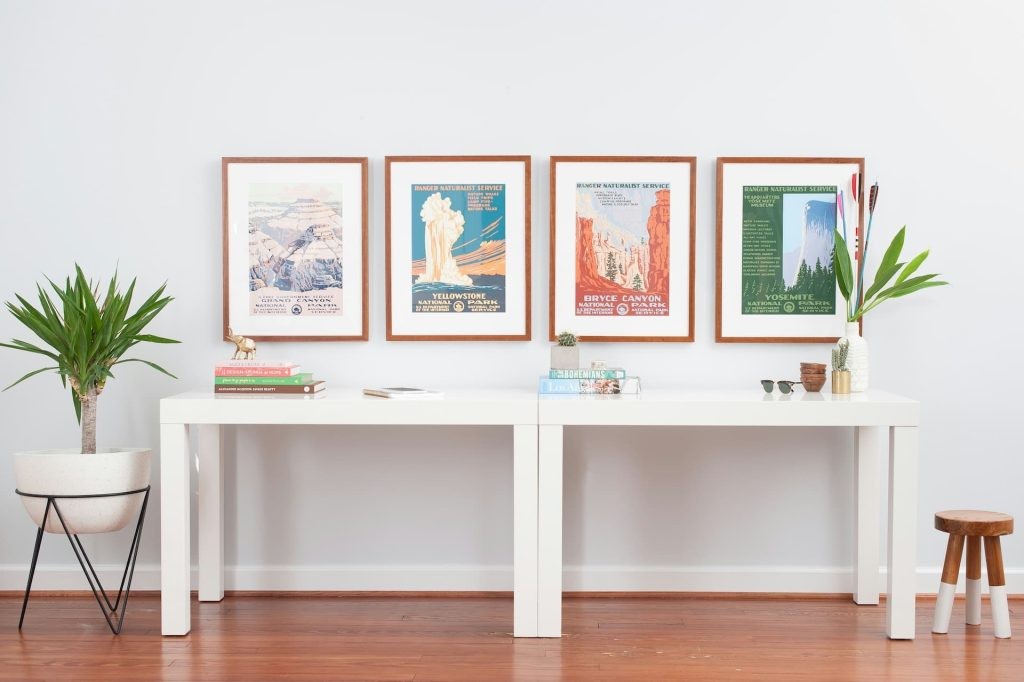
When it comes to presenting artwork or cherished photographs, frames are often the unsung heroes. A well-chosen frame does more than just hold an image — it enhances the artwork, complements the surrounding décor, and provides essential protection. Frames act as a bridge between art and environment, influencing how a piece is perceived and experienced.
Whether decorating a cozy home, a stylish office, or an upscale gallery, selecting the right frame can dramatically elevate the impact of the visual piece it holds.
Understanding the Different Types of Frames
Before choosing a frame, it is essential to understand the different types available. Each brings a unique style and atmosphere:
Wooden Frames: Timeless and Versatile
Wooden frames offer warmth and tradition. Whether finished in natural grains, painted bright colors, or stained dark for a luxurious feel, wood frames can adapt to almost any interior style.
Metal Frames: Sleek and Modern
For minimalist or industrial interiors, metal frames provide a clean, sharp look. Their slim profiles and metallic finishes create an understated elegance that suits modern photography and contemporary art.
Floating Frames: Artistic Drama
Floating frames create the illusion that the artwork is “floating” within the frame, adding depth and a gallery-like aesthetic. They are particularly popular for canvas prints and bold artwork.
Choosing the right type of frame depends not just on the artwork itself but also on the overall design vision of the space.
Factors to Consider When Choosing a Frame
Selecting the right frame involves more than picking a color or material. Several key considerations ensure that the final result is harmonious and enhances the art:
Color Harmony
The frame should complement, not overpower, the artwork. Neutral frames (black, white, natural wood) are versatile and timeless, while colorful frames can make a bold statement when paired thoughtfully.
Frame Size and Thickness
Thicker frames often suit large, dramatic pieces, while thinner frames can elegantly complement smaller or more delicate artworks. Proportions matter greatly in achieving the right visual balance.
Matting Options
Adding a mat (the border between the image and the frame) can create breathing space around the artwork and enhance focus. It also prevents direct contact between the glass and the artwork.
Services like PrintogRammer offer extensive options in frame width, mat colors, and sizing, allowing customers to fine-tune every detail to their preference.
Matching Frames to Décor Styles
The frame should harmonize with the environment where it will hang. Here are some style pairings to consider:
- Minimalist Interiors:Thin, black or metallic frames work best.
- Traditional Homes:Ornate wooden frames in walnut or oak tones add elegance.
- Eclectic Spaces:Bold colored frames or mixed frame styles create playful energy.
- Modern Industrial:Raw metal or concrete-look frames suit perfectly.
Understanding the interplay between frame, art, and room style ensures a cohesive and visually pleasing result.
The Emotional Impact of Proper Framing
Art and photographs carry emotional value — they represent memories, achievements, and creativity. Framing these pieces thoughtfully shows reverence for their meaning.
When a photograph from a wedding day or a child’s first painting is beautifully framed, it becomes a permanent testament to the memory it holds. Framing isn’t just about preservation; it’s about celebrating what matters.
Carefully selected frames amplify the emotional resonance of the piece, making them cherished focal points within homes or offices.
Common Mistakes to Avoid in Frame Selection
While framing seems simple, some common mistakes can diminish the impact of the artwork:
- Overly Ornate Frames for Simple Art:Simple art needs equally simple framing to avoid distraction.
- Wrong Color Choices:Mismatched frame colors can clash with the artwork or room.
- Incorrect Sizing:Frames that are too large or too small disrupt the visual balance.
- Ignoring Protective Needs:Without proper UV glass or backing, artworks can deteriorate over time.
Consulting reliable sources and using preview tools online can help avoid these pitfalls. Platforms such as Printogrammer offer guidance on picking frames that are both beautiful and practical.
The Role of Frames in Storytelling
Frames can also act as narrative tools within a space. A series of family photographs in matching frames can tell a generational story across a hallway. Travel photos framed in rustic wood can evoke adventure and nostalgia.
Choosing frames with intentionality — thinking of them as part of the story rather than just containers — turns walls into living biographies, museums of personal journeys.
Maintenance Tips for Long-Lasting Frames
Once artwork is framed, maintaining it properly ensures its beauty lasts:
- Regular Dusting:Use a soft cloth to gently clean frames.
- Avoid Direct Sunlight:Even UV-protected glass can eventually fade colors.
- Stable Environment:Keep frames away from areas with high humidity or extreme temperature fluctuations.
- Secure Hanging:Use appropriate wall anchors to avoid accidents, especially for heavy frames.
Proper care ensures that framed memories and masterpieces stay vibrant for generations.
Conclusion: Framing as an Art Form
Choosing the perfect frame requires a blend of aesthetic sensibility, technical knowledge, and emotional intuition. A well-selected frame transforms artwork, photographs, and personal mementos into gallery-worthy pieces that enhance any space.
Thanks to modern online platforms and expert providers like Print og Rammer and Printogrammer, individuals now have the tools and options to frame their treasured memories with elegance, durability, and style.
In an age where personal expression is more valued than ever, framing is no longer a final afterthought — it’s an integral part of bringing life and soul into our living spaces.




















